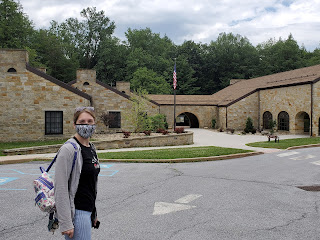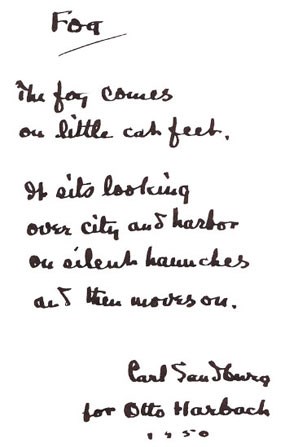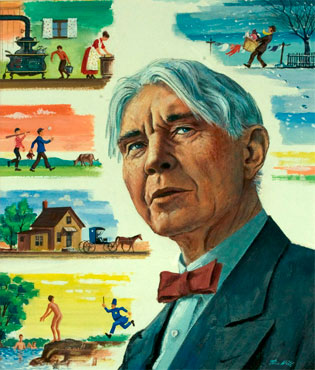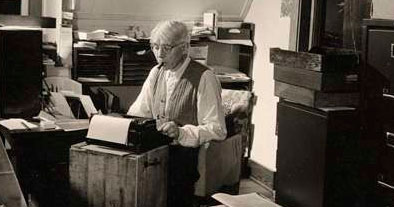We started our journey with the Allegheny Portage Railroad National
Historic Site. This was one of those fabulous visitor's centers that
taught us so much about history and physics!
The displays were an excellent way to learn about the process.
We toured the house and beautiful grounds and had a fascinating discussion with the ranger about the politics in the area and how hard it was that he was not in agreement with his friends/family's values. It was a little uncomfortable to even drive around this part of the state.
Next we traveled to Johnstown Flood National Memorial. I was very familiar with the story of this tragedy from a book I read in Social Work school, so it was very meaningful to see the actual site. The visitor's center had an amazing recreation of the chaos as seen in this photo:
"The South Fork dam failed on Friday, May 31, 1889 and unleashed 20,000,000 tons of water that devastated Johnstown, PA. The flood killed 2,209 people but it brought the nation and the world together to aid the "Johnstown sufferers." The story of the Johnstown Flood reminds us all, "...that we must leave nothing undone for the preservation and protection of our brother men." We learned a lot from the first-hand accounts of the events and it was a sobering experience. This spurred us on to listen to the Johnstown Flood book by David McCullough. NPS sites are so good at motivating us to learn more!
Finally we drove to the Fort Necessity Memorial Battlefield. "The battle at Fort Necessity in the summer of 1754 was the opening action of the French and Indian War. This war was a clash of British, French and American Indian cultures. It ended with the removal of French power from North America. The stage was set for the American Revolution."
The surrounding area was beautiful and we learned a lot from the rangers about the details of the location and people involved. The reconstructed fort was very interesting. We also explored the Mount Washington Tavern, which was build in the 1830's along the National Road (which we learned about for the first time here!). It was a stopping place for stagecoaches and their travelers.
We also visited the Stone House added by Gallatin in 1823.
It was a successful trip that reminded us how important our NPS visits
are! Can't wait for Covid to settle down enough to start traveling
again!

















































